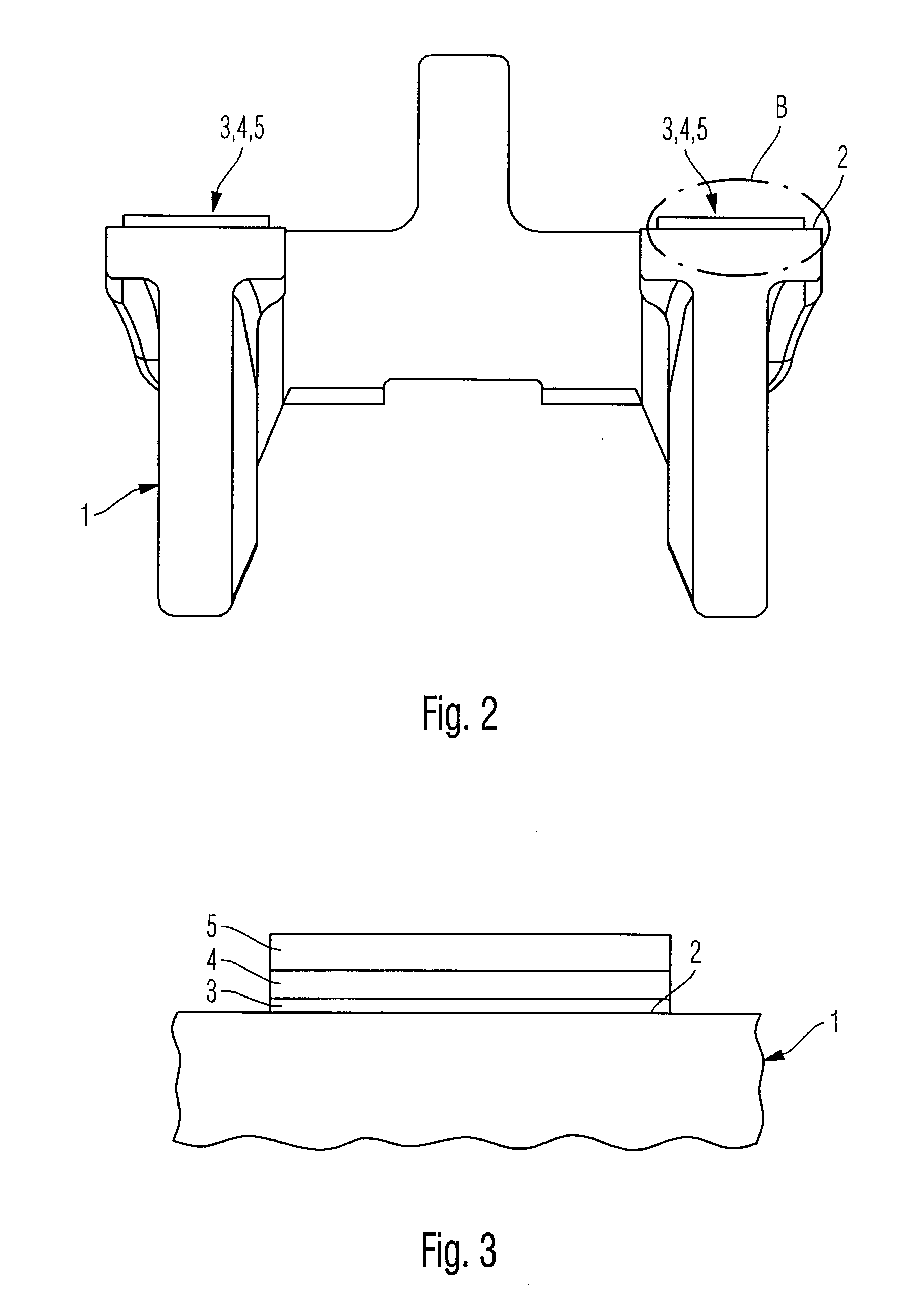Wear-resistant coating and process for producing it
a technology of wear-resistant coating and process, applied in the direction of superimposed coating process, machine/engine, transportation and packaging, etc., can solve the problems of reducing affecting the service life of valve gear, etc., to achieve the effect of reducing the friction coefficien
- Summary
- Abstract
- Description
- Claims
- Application Information
AI Technical Summary
Benefits of technology
Problems solved by technology
Method used
Image
Examples
Embodiment Construction
[0030] In the Figures, identical reference designations denote identical or functionally equivalent components unless stated otherwise.
[0031]FIG. 1 illustrates a perspective view and FIG. 2 a cross-sectional view on line A-A from FIG. 1 of a shiftable drag lever 1 in accordance with an embodiment of the present invention. The lever is used in the valve gear of internal combustion engines for switching off valves / cylinders and / or switching over the valve stroke. According to the present embodiment, the drag lever 1 has two sliding surfaces 2 which are arranged symmetrically with respect to one another and against which a mating body, for example a camshaft (not shown), comes to bear frictionally. The drag lever 1, particularly in the region of the sliding surfaces 2, is subject to wear as a result of the frictional pairing with the associated camshaft. It is therefore desirable for these sliding surfaces 2 of the shifting lever 1 to be provided with wear protection or a wear-resista...
PUM
| Property | Measurement | Unit |
|---|---|---|
| thick | aaaaa | aaaaa |
| thick | aaaaa | aaaaa |
| thick | aaaaa | aaaaa |
Abstract
Description
Claims
Application Information
 Login to View More
Login to View More - R&D
- Intellectual Property
- Life Sciences
- Materials
- Tech Scout
- Unparalleled Data Quality
- Higher Quality Content
- 60% Fewer Hallucinations
Browse by: Latest US Patents, China's latest patents, Technical Efficacy Thesaurus, Application Domain, Technology Topic, Popular Technical Reports.
© 2025 PatSnap. All rights reserved.Legal|Privacy policy|Modern Slavery Act Transparency Statement|Sitemap|About US| Contact US: help@patsnap.com



